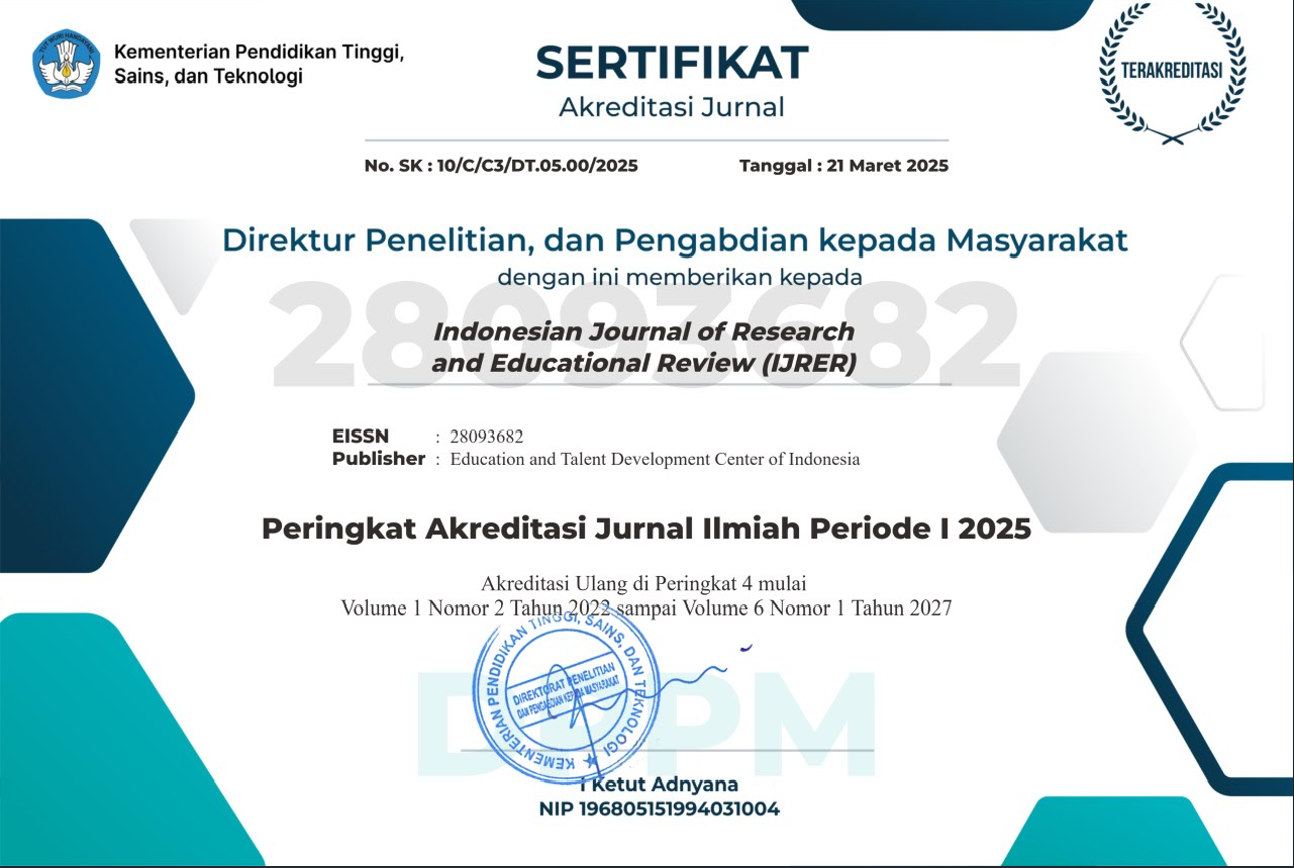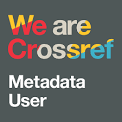Development of Learning Media Model for Creating Three-Dimensional Applied Art Works Based on Flipbooks in High School
DOI:
https://doi.org/10.51574/ijrer.v4i2.3008Keywords:
Art Works, Flipbooks, High School, Learning Media, Three-DimensionalAbstract
The intent is to develop a valid, practical, and effective learning media model for creating three-dimensional applied artworks based on flipbooks at high school. This research is a research and development method that combines the ADDIE, 4D, and Borg & Gall models. This research was conducted at public high school 6 Bantaeng with a total of 25 research subjects of class XII and 1 art and culture subject teacher. The media experts' assessment yielded an average value of 4.3 for all aspects, indicating their high validity. The findings indicated that the assessment by the expert material validator yielded an average score of 4.9, placing it in the very valid category. The assessment results showed that art and culture teachers rated the practicality of the material with an average score of 4.8, which is considered excellent, while students gave an average score of 4.4, also in the excellent or very practical range. In the effectiveness aspect, the gain score calculation was carried out, and a score of 0.41 was obtained, which means that the learning media for creating three-dimensional applied art works based on flipbooks is in the moderate category. Therefore, it can be concluded that the learning media for creating three-dimensional applied art works based on flipbooks at public high school 6 Bantaeng is in the moderate and effective category.
References
Abdullah, I. H., Wahyudi, D., Tonra, W. S., Tonra, W. S., & Hasbi, M. (2025). Development of Digital Teaching Materials Based on Differentiated Learning Using Canva for Mathematics Subjects. EduMatSains: Jurnal Pendidikan, Matematika dan Sains, 9(2), 244-255. https://doi.org/10.33541/edumatsains.v9i2.6322
Ahliana, A., Nurhikmah, N., & Anwar, C. R. (2025). Development of digital art and culture book for improving students learning outcomes. Journal of Research in Instructional, 5(1), 40-51. https://doi.org/10.30862/jri.v5i1.520
Alenezi, M., Wardat, S., & Akour, M. (2023). The need of integrating digital education in higher education: Challenges and opportunities. Sustainability, 15(6), 4782. https://doi.org/10.3390/su15064782
Bourn, D. (2021). Pedagogy of hope: global learning and the future of education. International Journal of Development Education and Global Learning, 13(2), 65-78.
Clarke, M. (2018). Rethinking graduate employability: The role of capital, individual attributes and context. Studies in higher education, 43(11), 1923-1937. https://doi.org/10.1080/03075079.2017.1294152
Crittenden, W. F., Biel, I. K., & Lovely III, W. A. (2019). Embracing digitalization: Student learning and new technologies. Journal of marketing education, 41(1), 5-14. https://doi.org/10.1177/0273475318820895
Dayanti, Z. R. (2021). Pengembangan bahan ajar elektronik flipbook dalam Pembelajaran Seni Rupa Daerah siswa kelas V di Sekolah Dasar. COLLASE (Creative of Learning Students Elementary Education), 4(5), 704-711. https://doi.org/10.22460/collase.v4i5.8187
Dharmayanti, N. M. D., Putra, I. N. A. J., & Paramartha, A. A. G. Y. (2021). Developing displayed flipbook as teaching material for assisting teacher to teach English in online learning for the fourth grade elementary school students. Indonesian Journal Of Educational Research and Review, 4(1), 113-121. https://doi.org/10.23887/ijerr.v4i1.35314
Fadillah, A., Nopitasari, D., & Bilda, W. (2021). Development e-book learning media based on kvisoft flipbook maker. Kreano, Jurnal Matematika Kreatif-Inovatif, 12(2), 312-322. https://doi.org/10.15294/kreano.v12i2.31684
Fadhilah, R., & Mulyani, P. K. (2024). Developing Problem-Based Learning Flipbook Media to Enhance Natural Sciences Education in Fifth Grade. Jurnal Penelitian Pendidikan IPA, 10(10), 7322-7331. https://doi.org/10.29303/jppipa.v10i10.7804
Gligorea, I., Cioca, M., Oancea, R., Gorski, A. T., Gorski, H., & Tudorache, P. (2023). Adaptive learning using artificial intelligence in e-learning: A literature review. Education Sciences, 13(12), 1216. https://doi.org/10.3390/educsci13121216
Gustiani, S. (2019). Research and development (R&D) method as a model design in educational research and its alternatives. Holistics (Hospitality and Linguistics): Jurnal Ilmiah Bahasa Inggris, 11(2). https://jurnal.polsri.ac.id/index.php/holistic/article/view/1849
Haleem, A., Javaid, M., Qadri, M. A., & Suman, R. (2022). Understanding the role of digital technologies in education: A review. Sustainable operations and computers, 3, 275-285. https://doi.org/10.1016/j.susoc.2022.05.004
Hardiansyah, F. (2022). Improve science learning outcomes for elementary school students through the development of flipbook media. Jurnal Penelitian Pendidikan IPA, 8(6), 3069-3077. https://doi.org/10.29303/jppipa.v8i6.2413
Hasbi, M., Lukito, A., Sulaiman, R., & Muzaini, M. (2019). Improving the mathematical connection ability of middle-school students through realistic mathematics approach. Journal of Mathematical Pedagogy (JoMP), 1(1), 37-46. https://doi.org/10.26740/jomp.v1n1.p37-46
Jayanti, W., & Setyasto, N. (2024). Development of Kvisoft-Based Flipbook Learning Media on Learning Outcomes in Natural Sciences on the Human Circulatory System. Jurnal Penelitian Pendidikan IPA, 10(5), 2511-2520. https://doi.org/10.29303/jppipa.v10i5.7025
Mavroudi, A., Giannakos, M., & Krogstie, J. (2018). Supporting adaptive learning pathways through the use of learning analytics: developments, challenges and future opportunities. Interactive Learning Environments, 26(2), 206-220. https://doi.org/10.1080/10494820.2017.1292531
Nicolaou, C., Matsiola, M., & Kalliris, G. (2019). Technology-enhanced learning and teaching methodologies through audiovisual media. Education Sciences, 9(3), 196. https://doi.org/10.3390/educsci9030196
Rizki, M. (2024). Implications of Information Technology Advances on the Development of Students' Islamic Boarding School Learning Process. ETDC: Indonesian Journal of Research and Educational Review, 4(1), 216-225. https://doi.org/10.51574/ijrer.v4i1.2685
Roemintoyo, R., & Budiarto, M. K. (2021). Flipbook as innovation of digital learning media: Preparing education for facing and facilitating 21st Century learning. Journal of Education Technology, 5(1), 8-13. https://doi.org/10.23887/jet.v%25vi%25i.32362
Spatioti, A. G., Kazanidis, I., & Pange, J. (2022). A comparative study of the ADDIE instructional design model in distance education. Information, 13(9), 402. https://doi.org/10.3390/info13090402
Stewart, O. G. (2023). Using digital media in the classroom as writing platforms for multimodal authoring, publishing, and reflecting. Computers and Composition, 67, 102764. https://doi.org/10.1016/j.compcom.2023.102764
Szymkowiak, A., Melović, B., Dabić, M., Jeganathan, K., & Kundi, G. S. (2021). Information technology and Gen Z: The role of teachers, the internet, and technology in the education of young people. Technology in society, 65, 101565. https://doi.org/10.1016/j.techsoc.2021.101565
Wanjara, A. O., & Ogembo, P. O. (2024). Integration of Information Communication Technology into Geography Instruction in Public Secondary Schools in Kenya. Mythical or Reality?. ETDC: Indonesian Journal of Research and Educational Review, 3(3), 1-10. https://doi.org/10.51574/ijrer.v3i3.1387

Downloads
Published
How to Cite
Issue
Section
License
Copyright (c) 2025 Dian Arwini, Tangsi, Agussalim Djirong

This work is licensed under a Creative Commons Attribution-ShareAlike 4.0 International License.









1.png)













